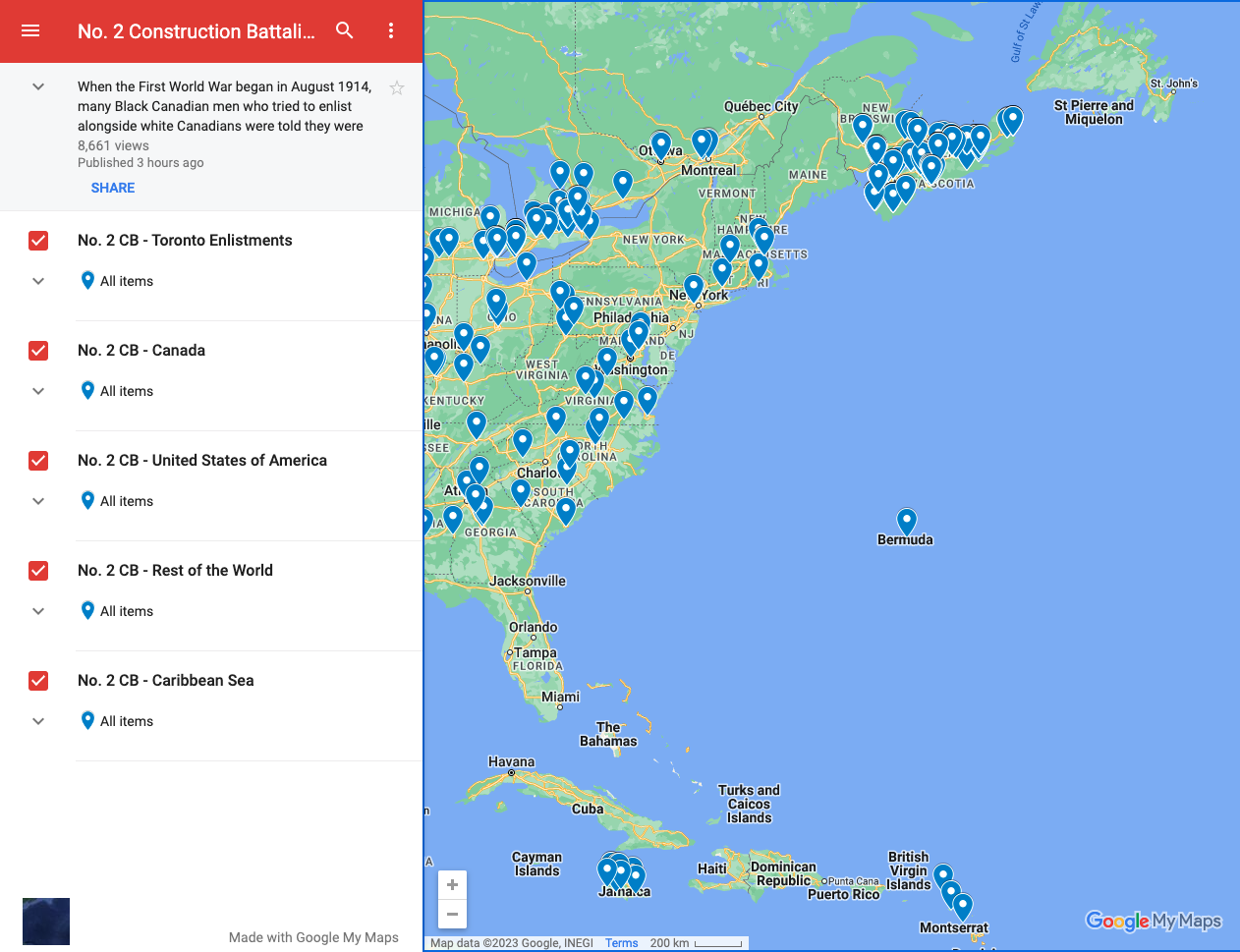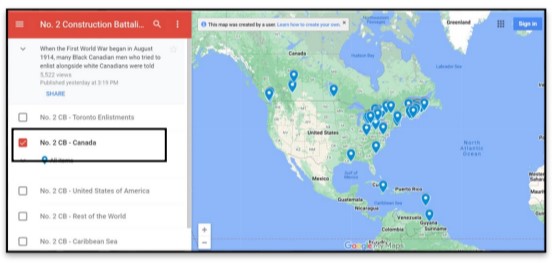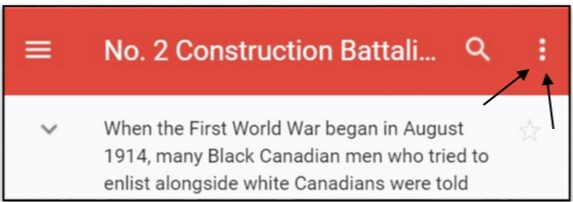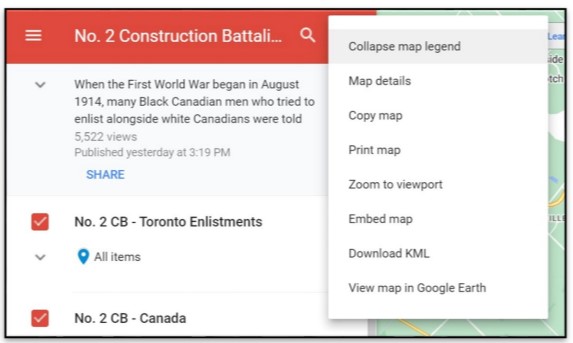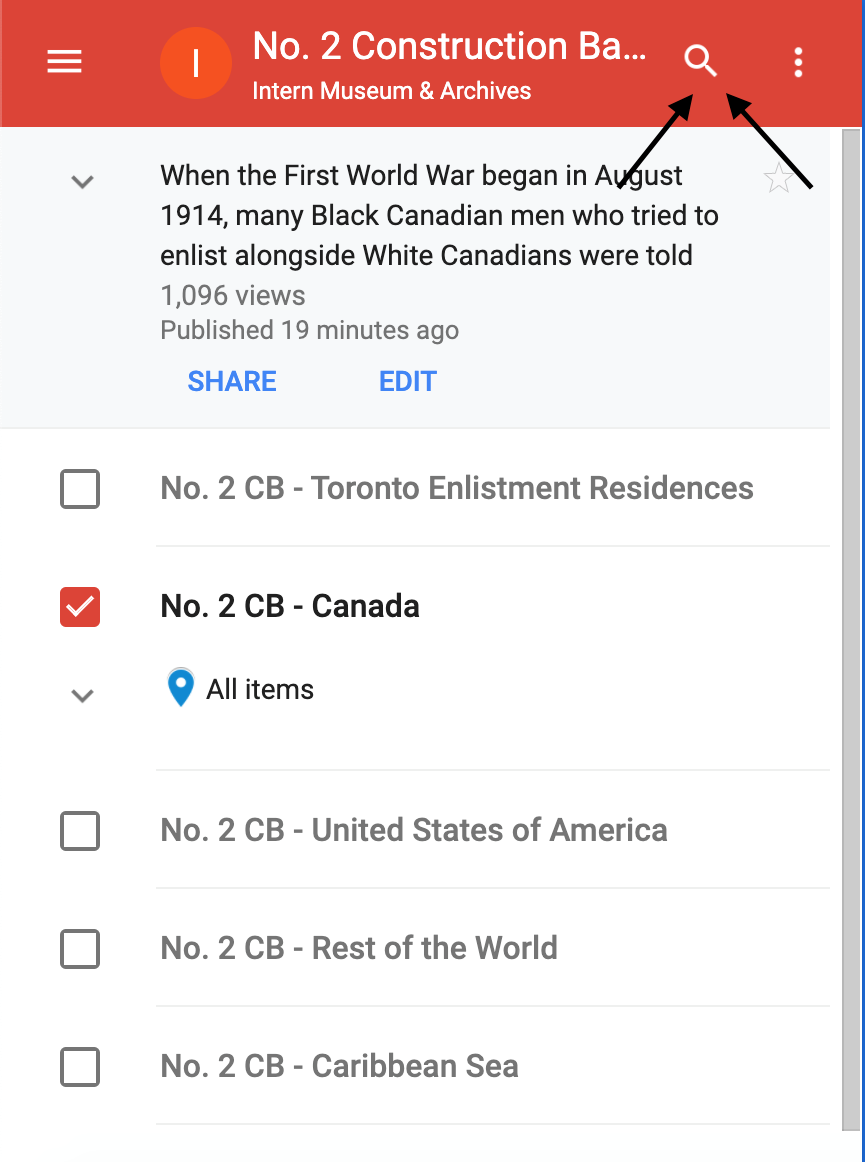When the First World War began in August 1914, many Black Canadian men who tried to enlist alongside white Canadians were told they were not welcome. Although there were no written policies allowing army officials to discriminate against Black Canadians, local recruiting officers and commanding officers were left to decide who joined their units. For two years, Black Canadians and their allies pressured the Government of Canada to end discrimination, but officials declared that enlistees could not be refused based on their race. By 1916, federal officials decided to create No. 2 Construction Battalion as one of the ways Black Canadians could serve.
Created on July 5, 1916, No. 2. CB was largest Black unit created in the history of Canada. After Daniel H. Sutherland took command, the Black Battalion began recruiting across Canada. Most of the non-commissioned personal were Black, and except the Chaplain, Rev. William Andrew White, all the officers were white.
large.jpg) No. 2 Construction Battalion at Truro, Nova Scotia. c.1916-1917. Pictou County Military Museum.
No. 2 Construction Battalion at Truro, Nova Scotia. c.1916-1917. Pictou County Military Museum.
Despite being under strength, No. 2 CB sailed to England in March 1917, where it reorganized as No. 2 Construction Company. In May, No. 2 Construction Company was sent to the Jura Mountain region of France to serve with Canadian Forestry Corps. No. 2 returned to Canada in 1919 and was disbanded in 1920. The Black Battalion leaves a legacy of service to country and persistence in fighting for equality: this legacy has finally received national recognition. On July 9, 2022, Prime Minister Justin Trudeau officially apologized to the descendants of No. 2 Construction Battalion for the systemic anti-Black racism that members of the Battalion faced before, during, and after the First World War.
 Group at No. 2 Construction Battalion plaque dedication ceremony at Queen's Park (5 July 1920). City of Toronto Archives
Group at No. 2 Construction Battalion plaque dedication ceremony at Queen's Park (5 July 1920). City of Toronto Archives
This map was created to serve as a visual representation to show the journeys of each serviceman and perhaps provide further insight into their lives. The map also helps highlight African Canadians and how they played important roles in the defence of Canada. They are honoured and celebrated for the victories they helped create at home and overseas. Regardless of their identities, construction battalions were vital to the war effort, and thus the No. 2 Construction Battalion is an important part of Canadian history.
The information on this map has been utilized from the "Nominal Roll of Officers, Non-Commissioned Officers and Men 'on strength' as of 28 March 1917" that are held and digitized by the Nova Scotia Archives.
We are also very thankful to Kathy Grant and Black Canadian Veterans Stories for their assistance in providing valuable research and support. This is a continuously ever-growing project where additional resources and military records of the No. 2 Construction Battalion service members are being added to the map, through the support of our important partners at Black Canadian Veterans. We hope this will encourage further research in this area of Canadian military history.
Alternatively, you can watch this video or download PDF versions of how to research a soldier and how to use the map. Please contact us for more information on this resource.
| Instructions | Screenshots |
|---|---|
At the top of the Google MyMap on the left, is a description of the map and related information. To read the full description, hover over the text in the top left corner of the screen until you see a 'white glove cursor' - click on the text. You can also use the drop down arrow.
|  |
At the bottom of the description text, you will find the list of sources used to get the information for the map. Please click on them to learn more! You will also find our contact email for the 91妻友 Region District School Board (YRDSB) Museum & Archives. Please email us at museum@yrdsb.ca if there is any inaccurate information, or changes that need to be made.
| 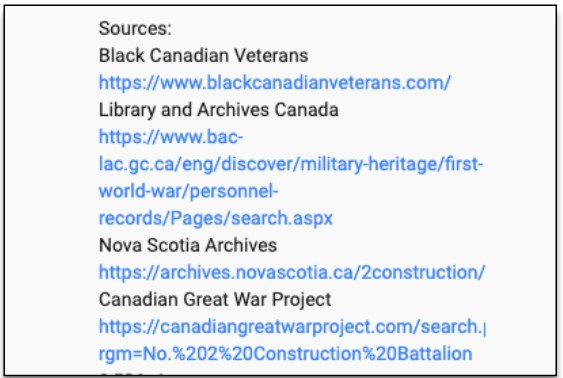 |
The Google MyMap on No. 2 Construction Battalion is divided into five categories or layers, as seen here on the left. These categories reflect the Country of Birth of the service members. When a category is checked off, the map will reflect the servicemen's present Address that was provided on their attestation paper. Addresses at the time of enlistment are either personal addresses, addresses of next of kin, addresses of the enlistment site, or the town/municipality/city of birth. | 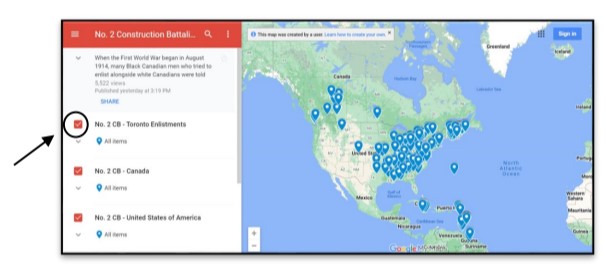 |
If you wish to only see servicemen born in Canada, check this category on the left. The map will now show only those individuals born in Canada. You can do the same for the other 4 locations. The blue markers on the map will reflect the servicemen's Address that was provided at the time of enlistment. It is normal to see them scattered internationally. Click the name on the list to see all of their information, listed alphabetically, as well as the corresponding blue marker on the map showing their location. You may also click the blue markers on the map to reveal the corresponding serviceman’s name and information on the left. Please note that while No. 2 Construction Battalion was a segregated Black unit, its leadership was predominately white, including its commanding officer, Lieutenant-Colonel Daniel Hugh Sutherland. Therefore the names on the map will be of different ethnic backgrounds. The Battalion’s one officer of African descent was the chaplain, Honorary Captain William A. White. Use the plus and minus sign to zoom in and zoom out. You may also view the map through two different views: the “Map” view which is the default view, and the “Earth” satellite view. |
|
The menu allows further options to utilize the map. To access the menu, click the three dots here. You can select from the following options: Collapse map legend: This will hide the legend, allowing viewers to see the entire map. Map Details: This will give you the map description in plain text. Copy Map: Allows you to copy and share the map with others. Print Map: If you wish to print the map on paper, please follow the printing instructions. Zoom to Viewport: This option will zoom out and display all markers that are highlighted. Embed Map: Provide a URL link that will allow you to share the map. Download KML: Download the data for viewing in Google Earth. |
|
| Instructions | Screenshots |
|---|---|
To research a specific soldier, you can use the search function on the map. To do this, click on the magnifier icon. Type in a name (first and/or last) or regimental number. The name may not be at the top of the suggestions. You may have to scroll through the list to find your search item. |
|
| Click on the name you are seeking, and it will bring you directly to a marker on the map as well as load the soldier’s profile. | 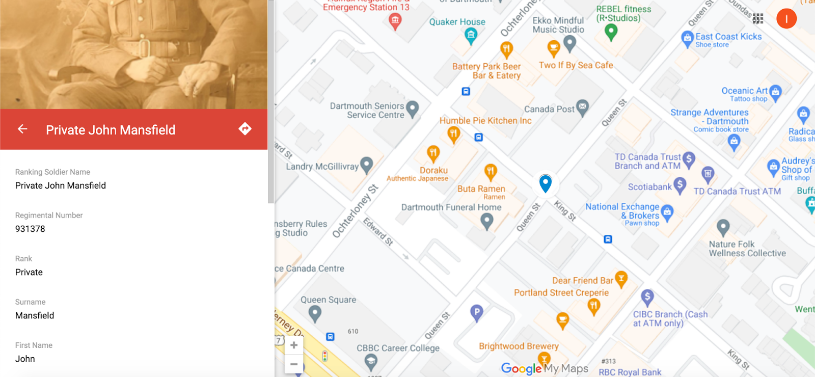 |
| The search results may vary based on the amount of research data available. You can read through the details on the enlisted soldier’s regimental number and family information, as presented from archival information from the Nova Scotia Archives digitized version of the Nominal Roll of Officers, Non-Commissioned Officers and Men 'on strength' as of 28 March 1917. In this case of Private John Mansfield, Black Canadian Veterans has provided a research profile on this soldier. Please click the associated link for more information. | 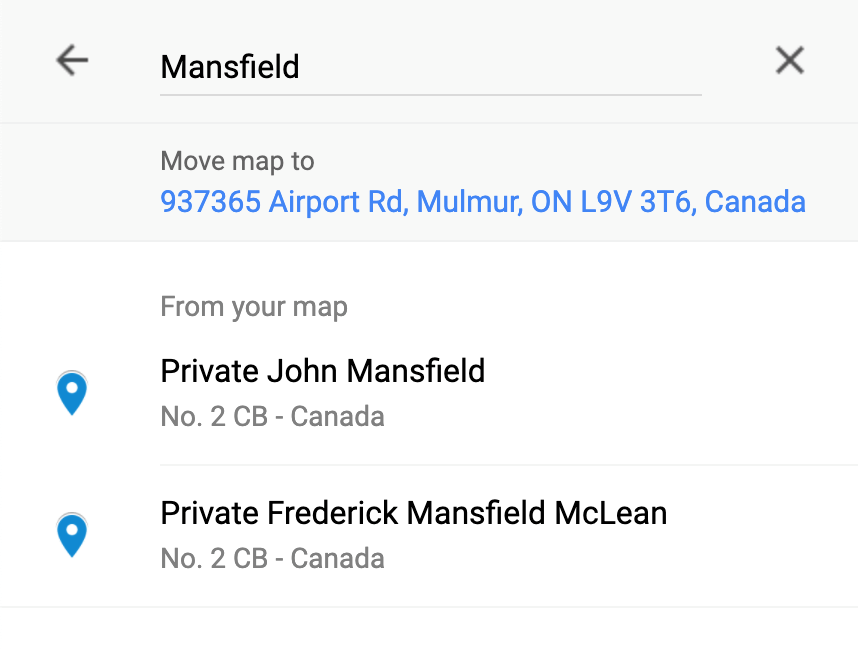 |
Kathy Grant of Legacy Voices Project and Captain Kevin Junor of the Toronto Scottish Regiment discuss with YRDSB staff about the history and lasting importance of No. 2 Construction Battalion in this video. They talk about their roles as members of the National Apology Advisory Committee, leading up to the Government of Canada's apology to the families and descendants of No. 2 Construction Battalion which took place in July 2022.
“It’s important that students learn about No. 2 Construction Battalion, because it shows the determination of these soldiers to serve. It shows their patriotism. A lot of times when you learn about First World War history, you don’t see examples of members of the Black community.”
Kathy Grant, Legacy Voices Project
This map has been created based on the Nominal Roll of Officers, Non-Commissioned Officers and Men 'on strength' as of 28 March 1917, that has been digitized by the Nova Scotia Archives. Additional information and research found on the map has been supported through the important work completed by Black Canadian Veterans Stories. Lastly, the Personnel Records of the First World War are available through Library and Archives Canada. You can continue your research at all of these locations.
If you find any errors or omissions, please email us at museum@yrdsb.ca.
YRDSB Black History Google MyMap
In order to centre Black voices in Canadian History, the YRDSB Museum & Archives has created this map to profile some of the many noteworthy people of African descent in Canada. Highlights include early settlement locations, historical profiles, in addition to places of significance to Canadian history. This map is continually being updated and edited as more research is completed by our team.
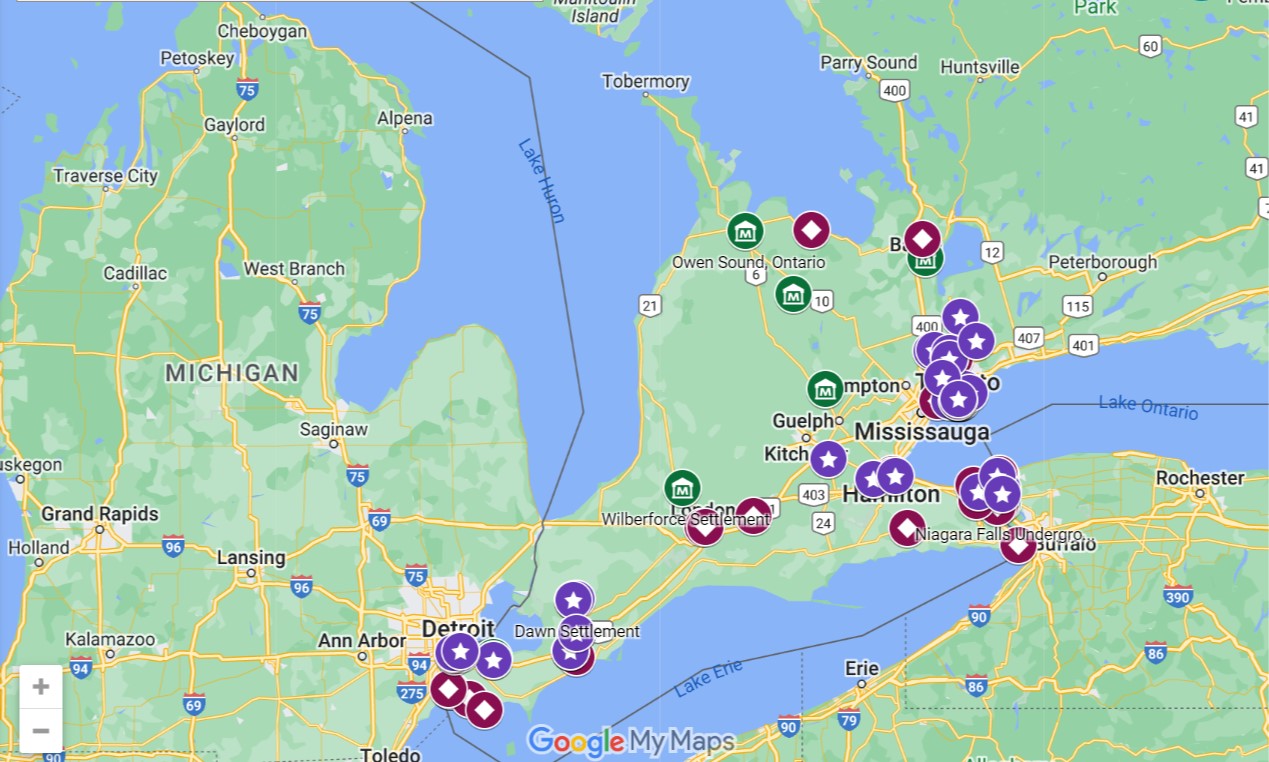
On Wednesday October 26th 2022, Richmond Hill High School and YRDSB Museum & Archives hosted a Canadian Veteran & Military Member Panel event at the Learning Library Commons. Topics included were Remembrance Day, who is a veteran, what does military service look like and what are its impact on family members. A goal of the panel discussion was to raise awareness of the diversity and resilience within our Canadian military members, and to engage in education on what military members do in their jobs and the much needed support of community/family.
The following panelists shared some of their experiences and first-hand knowledge of being past or present members of the Canadian Armed Forces:
- Kathy Grant, Legacy Voices Project
- Captain Kevin Junor, Toronto Scottish Regiment
- Colonel (Ret’d) Nishika Jardine, Veteran Ombudsperson
- Master Corporal Justin Schoenermarck, attached with the Queen’s 91妻友 Rangers
